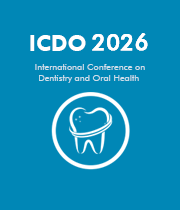Title: Facial fillers in HIV-associated lipodystrophy: A literature review with a focus on self-perception
Abstract:
Facial lipodystrophy (FL) is a common manifestation in HIV-positive patients and is associated with the loss of facial volume caused by prolonged use of antiretroviral therapy. FL is considered a stigmatizing condition that affects not only aesthetic aspects but also self-perception, self-esteem, and patients’ overall quality of life. In this context, facial harmonization procedures have emerged as therapeutic tools for restoring facial contours and promoting social reintegration. Consequently, volumizing procedures may contribute to the psychosocial well-being of a stigmatized population. The aim of this literature review is to evaluate facial harmonization as a treatment for FL in HIV-positive patients, including assessments of quality of life and self-perception. The search was conducted in the PubMed and LILACS scientific databases, using descriptors in both Portuguese and English registered in DeCS and MeSH Terms, such as "HIV," "lipodystrophy," "facial harmonization," "dermal fillers," "quality of life," and "self-perception." Original articles published between 2008 and 2025 in Portuguese, English, or Spanish were included, focusing on HIV-positive patients and emphasizing aesthetic and psychosocial outcomes following facial harmonization. The selection process involved reading titles, abstracts, and full texts. Data extracted included: author/year, country, sample characteristics, filler material used, objectives, results, and conclusions. The collected data were organized using Microsoft Excel. A total of 16 studies were included after selection: conducted in the United States (8 studies), United Kingdom (4 studies), and Brazil, Canada, Italy, and Colombia (1 study each). The studies focused on HIV-positive patients aged between 14 and 50 years. The most commonly used materials were poly-L-lactic acid (56%), hyaluronic acid (31%), autologous fat grafts, and polyacrylamide gel. All materials demonstrated significant improvements in facial appearance, promoting contour restoration and reduction of facial atrophy. Patient self-reports indicated increased self-esteem and improved quality of life, both essential for social reintegration. The most frequent adverse effects were mild and transient, with edema (25%), ecchymosis (15%), and minor inflammation (10%) being the most reported, with no serious complications. Poly-L-lactic acid stood out due to its long-lasting results (12–24 months) and favorable cost-effectiveness ratio. Hyaluronic acid offered rapid but less durable outcomes, while fat grafting showed variable results and required multiple sessions. A key limitation among the studies was methodological heterogeneity. Nonetheless, facial harmonization procedures were found to be effective, safe, and well tolerated in the treatment of FL in HIV-positive individuals. In addition to aesthetic improvements, psychosocial benefits such as enhanced self-esteem, self-perception, and quality of life were observed. These findings highlight the importance of such interventions as part of comprehensive care. However, the heterogeneity of available studies underscores the need for further robust research to strengthen the evidence base and establish standardized protocols.




